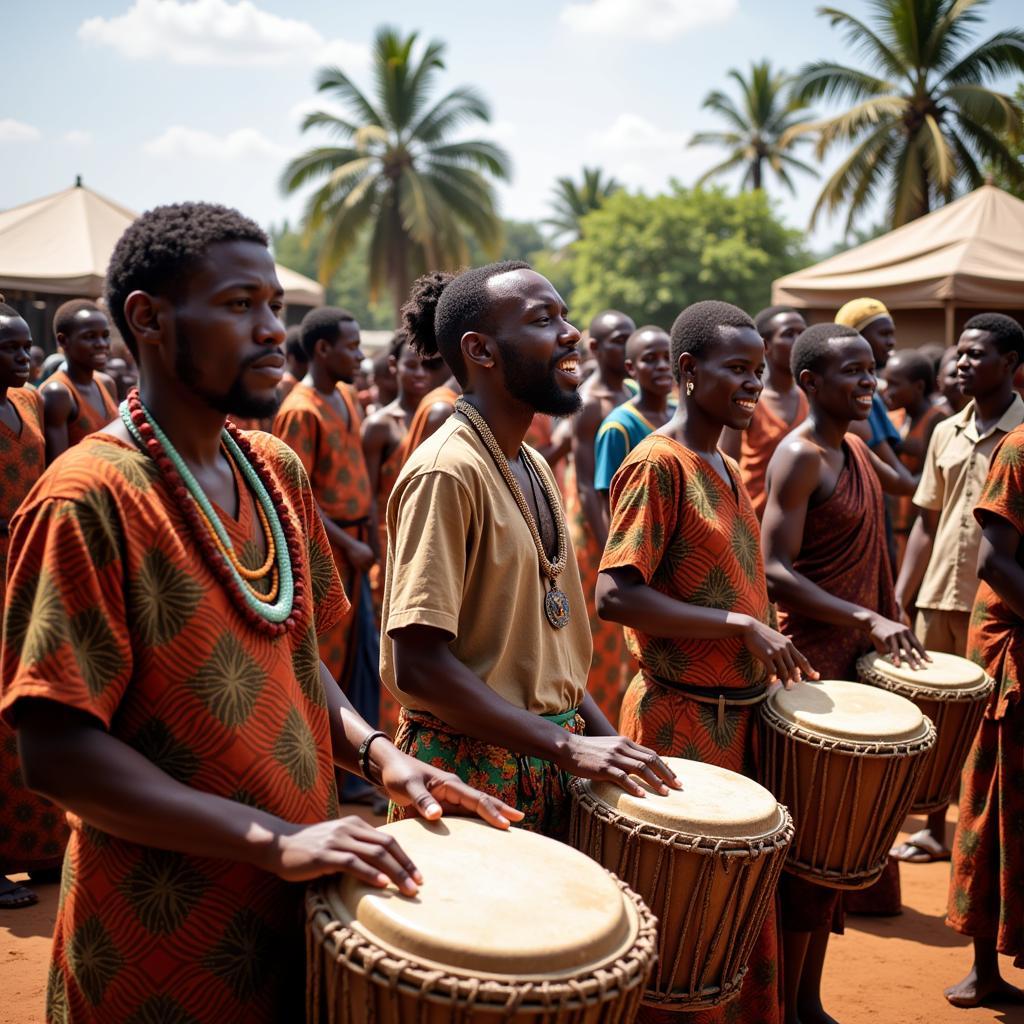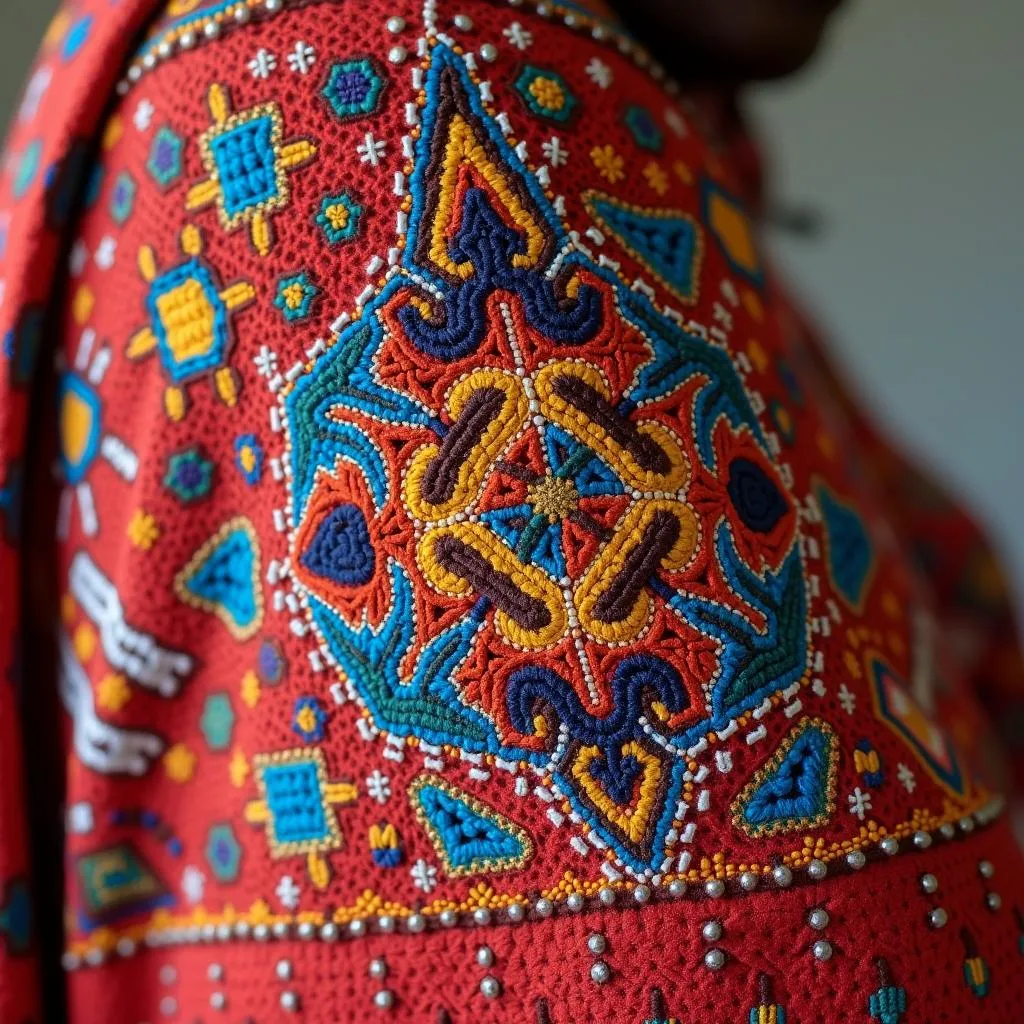Fascinating African Crocodile Facts
African crocodiles, the armored reptiles of Africa’s waterways, are creatures that evoke both awe and fear. They play a crucial role in the ecosystem and hold a significant place in the cultural tapestry of the continent. From their impressive size to their unique hunting strategies, there’s a lot to learn about these ancient predators.
The Different Types of African Crocodiles
Africa is home to three main crocodile species: the Nile crocodile, the dwarf crocodile, and the West African slender-snouted crocodile. Each species has its own unique characteristics and plays a distinct role in its environment.
The Nile Crocodile: The Apex Predator
The Nile crocodile is the largest of the three and is perhaps the most iconic. It can grow up to 20 feet long and weigh over 2,000 pounds. These apex predators are found throughout sub-Saharan Africa, inhabiting rivers, lakes, and swamps. Their diet consists of fish, birds, mammals, and even other crocodiles.
The Dwarf Crocodile: A Small but Mighty Hunter
The dwarf crocodile, as its name suggests, is the smallest of the African crocodile species. It rarely grows longer than six feet. These shy creatures prefer slow-moving rivers and swamps in Central and West Africa. They primarily feed on fish, crabs, and amphibians.
The West African Slender-Snouted Crocodile: A Fish Specialist
The West African slender-snouted crocodile is a critically endangered species found in isolated pockets of West Africa. It has a distinctive narrow snout, perfectly adapted for catching fish. These crocodiles are shy and reclusive, making them difficult to study in the wild.
African Crocodile Adaptations for Survival
Over millions of years, African crocodiles have evolved remarkable adaptations that allow them to thrive in their environments.
Powerful Jaws and Teeth
African crocodiles have incredibly powerful jaws, capable of delivering a bite force of over 5,000 pounds per square inch. This immense force is used to crush bones and kill prey quickly. Their teeth are conical and sharp, perfect for gripping and tearing flesh.
Camouflage and Ambush Predators
Crocodiles are masters of camouflage, blending seamlessly into their surroundings. They lie patiently in wait, partially submerged in water, their eyes and nostrils just above the surface. When prey comes close, they launch a sudden and deadly attack.
Sensory Adaptations
Crocodiles have highly developed senses that help them locate prey and navigate their environment. Their eyes are located on the top of their heads, giving them a wide field of vision. They also have sensitive ears and a unique sensory organ on their snouts that detects vibrations in the water.
African Crocodiles and Their Role in the Ecosystem
African crocodiles play a vital role in maintaining the health of their ecosystems.
Regulating Prey Populations
As apex predators, crocodiles help to control populations of fish, birds, and mammals. This prevents overgrazing and ensures the overall health of the ecosystem.
Maintaining Water Quality
Crocodiles often dig burrows along riverbanks, which provide shelter for other animals and help to aerate the soil. Their presence also helps to keep waterways clear of debris and carrion.
Cultural Significance
Crocodiles hold a special place in the folklore and mythology of many African cultures. They are often seen as symbols of power, strength, and fertility. In some cultures, they are even revered as deities.
Threats to African Crocodiles
Despite their importance, African crocodile populations are facing a number of threats.
Habitat Loss
Human activities such as deforestation, agriculture, and urbanization are destroying crocodile habitats. This loss of habitat is one of the biggest threats to their survival.
Hunting and Poaching
Crocodiles are hunted for their skin, meat, and body parts, which are used in traditional medicine. The illegal wildlife trade also poses a significant threat.
Human-Wildlife Conflict
As human populations expand, they are increasingly coming into conflict with crocodiles. This can lead to crocodiles being killed in retaliation for livestock attacks or perceived threats to human safety.
Conservation Efforts
Efforts are underway to conserve African crocodile populations and mitigate the threats they face.
Protected Areas
Many countries have established protected areas for crocodiles, such as national parks and wildlife reserves. These areas provide safe havens for crocodiles and help to protect their habitats.
Community-Based Conservation
Community-based conservation programs work with local communities to promote sustainable crocodile management practices. This includes educating people about the importance of crocodiles and providing alternative livelihoods to reduce the pressure on crocodile populations.
Research and Monitoring
Ongoing research and monitoring programs are essential for understanding crocodile populations and the effectiveness of conservation efforts. This information is used to inform management decisions and guide future conservation strategies.
What is the bite force of an African crocodile?
African crocodiles have the strongest bite force of any animal, reaching up to 5,000 pounds per square inch.
What is the lifespan of an African crocodile?
African crocodiles can live for 70 to 100 years in the wild.
What is the difference between a crocodile and an alligator?
Crocodiles and alligators are both reptiles with similar appearances, but they belong to different families. Crocodiles have a more pointed snout, while alligators have a rounded snout. Crocodiles also tend to be larger than alligators.
Conclusion
African crocodiles are fascinating and important creatures that play a vital role in their ecosystems. By understanding the threats they face and supporting conservation efforts, we can help ensure that these ancient predators continue to thrive for generations to come. Their survival depends on our commitment to protecting their habitats and promoting sustainable coexistence.
For further information on African wildlife and conservation efforts, you can explore more articles on our website. You can find interesting facts about African Dwarf Crocodile Facts Kids and the African Jacana Vessel Details. We also have articles on other African animals such as African Animals Bison and their scientific name, African Bison Scientific Name.
FAQ
- What is the largest African crocodile species?
The Nile crocodile is the largest African crocodile species, reaching lengths of up to 20 feet. - What do African crocodiles eat?
African crocodiles are opportunistic predators and their diet consists of fish, birds, mammals, and even other crocodiles. - Are African crocodiles endangered?
The West African slender-snouted crocodile is critically endangered, while the Nile crocodile and dwarf crocodile are classified as least concern, but their populations are declining in some areas. - How do African crocodiles catch their prey?
African crocodiles are ambush predators, using their camouflage to blend into their surroundings and surprise their prey with a sudden attack. - How can I help protect African crocodiles?
You can support organizations that work to conserve crocodiles and their habitats, reduce your impact on the environment, and educate others about the importance of these creatures.
Need More Help?
When you need support, please contact us:
- Phone Number: +255768904061
- Email: kaka.mag@gmail.com
- Address: Mbarali DC Mawindi, Kangaga, Tanzania
We have a 24/7 customer support team.



